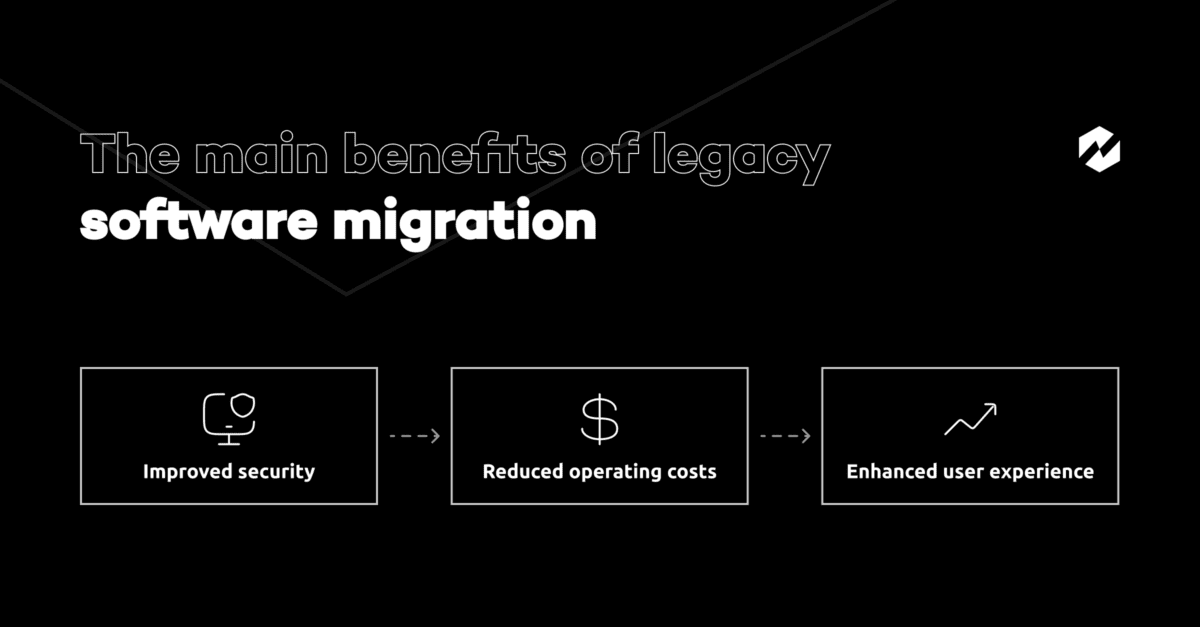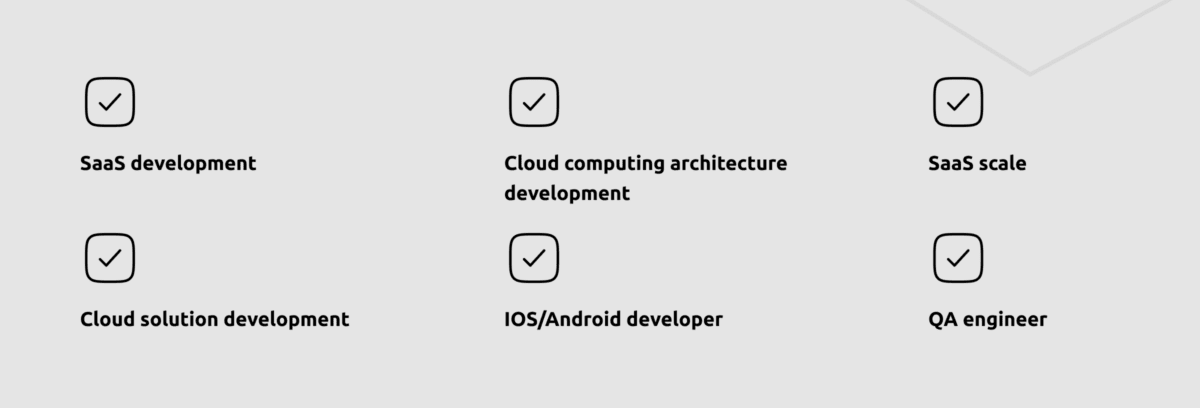Do you have an outdated legacy application that needs to be migrated in order to stay competitive and provide customers with the technology they expect? From planning through retiring, a successful migration strategy is paramount for success.
In this blog post, we’ll provide a step-by-step guide on how to migrate legacy applications to the cloud – taking considerations for security, scalability and functionality into account. Keep reading if you’re interested in learning more about application migration best practices that can help you maximize the potential of new technology!
Read Also: What Is Cloud Development? The Fundamentals You Need To Know In 2023
What Is Legacy Application Migration?
It is a complex process that can be daunting for many organizations. Legacy application migration involves shifting legacy applications from a legacy platform onto a newer, more secure system.
This process relies on a dedicated team of experts who possess essential knowledge and experience to ensure the successful migration of legacy applications and their associated data. The goal is to migrate legacy applications without negatively impacting users’ ability to access data.
Legacy application migration ensures long-term protection against vulnerabilities and enhances the overall business performance by streamlining the architecture processes and providing scalability in the cloud while achieving better cost efficiency and protecting investments already made in legacy systems and data.
Read Also: How to Build a Service Marketplace Platform? Full Guide with Examples
Why is legacy application migration to the cloud important?
Legacy application migration to the cloud is essential to make the most of the different business opportunities available today. As the speed of modern business accelerates, legacy applications are unable to keep up with this rapid pace and become increasingly unstable. Without migration, legacy applications can become a major roadblock for organizations looking to take advantage of new technology and take their business to the next level.
Cloud migration can provide legacy applications with greater scalability, allowing them to keep up with modern demands and remain relevant within the industry. Additionally, cloud implementation offers improved flexibility and potentially lower costs compared to maintaining legacy systems, making cloud migration an economically sound decision for any organization interested in staying ahead of its competition.
The main benefits of legacy software migration
There are many benefits associated with legacy software migration which make it well worth the effort. Let’s take a close look at some of these benefits in more detail:


- Improved security. One of the advantages of migrating to modern, cloud-based software is improved security. As older versions of software become increasingly vulnerable to malicious attacks, it becomes increasingly important to migrate to newer systems that have better security protocols in place.
- Reduced operating costs. Another benefit of legacy software migration is reduced operating costs. Migrating your existing system to a cloud-based platform can significantly reduce hardware and IT support expenses associated with maintaining an on-premise solution.
Additionally, by taking advantage of scalability options offered by cloud providers like Amazon Web Services (AWS) and Microsoft Azure, organizations can save money by only paying for what they need when they need it.
- Enhanced user experience. Finally, migrating your legacy system to a modern alternative can enhance user experience across all platforms and devices. Cloud-native applications are designed specifically with mobile users in mind, making them easier and faster to use than legacy systems that were not built for such environments.
Additionally, modern applications also feature intuitive interfaces, which make them easier to navigate than their predecessors – further improving the user experience for end users.
5 Phases to Successful Legacy Application Migration

Making the decision to migrate a legacy application is an important process that requires careful thought and planning. But you can’t just “flip the switch” and expect everything to go smoothly – a successful legacy application migration to the cloud involves multiple phases across teams, stakeholders, and technologies. If you want to ensure your migration project runs efficiently with minimal disruption, it pays to familiarize yourself with these five phases.
Read Also: Large-Scale Software Development: Process, Standards, and Risks
Assessment Phase
Migrating from legacy software to modern technology can be a challenging but worthwhile process for businesses. By taking the time to evaluate their existing application and identifying any issues or challenges, businesses are then able to determine their goals for the migration process. Let’s take a look at the main steps of assessing legacy software before deciding to migrate:
- Evaluating existing application
When considering a migration from legacy software, it is important to first evaluate what you have. This includes looking into which parts of your existing application are still functioning and which areas may need improvement.
Doing this will give you an idea of where your strengths and weaknesses are and how much work needs to go into making sure everything runs smoothly following the migration. Additionally, evaluating your current application allows you to identify any potential areas that could benefit from a modernized solution.
- Identifying issues with the application
Once you have evaluated your current application, it is important to identify any issues that may exist with it. This could include anything from compatibility problems between different pieces of software or hardware or technical limitations in terms of performance or scalability.
Once these issues are identified, it is then possible for businesses to begin formulating solutions that address any underlying problems or challenges with their existing system.
- Determining goals of migration
After identifying any potential issues with an existing system, businesses must then decide what their goals are for the migration process itself. These goals should focus on improving customer experience, streamlining processes, reducing costs, and increasing efficiency while also ensuring functionality remains consistent throughout the entire transition period.
Setting clear objectives prior to beginning any migration will help ensure that all projects remain on track and successful outcomes can be achieved in a timely manner.
Evaluating existing applications, identifying potential issues with an existing system, and determining goals for a successful migration all play an essential role in ensuring success when switching from legacy software to modern technology solutions.
Taking time during this assessment phase will help organizations make more informed decisions regarding their migrations and ultimately lead them toward achieving better results in the long-term.
Planning Phase
A successful migration is dependent on a number of factors, including the creation of a detailed migration plan, the selection of an appropriate migration approach, and the identification of potential risks and challenges. Let’s take a look at each of these elements in more detail:
- Migration plan
This plan should include information about the timeline for the project, budget requirements for each phase of the process, and specific resources needed for successful completion. It should also include information about any timelines or constraints that must be addressed during the course of the project. This is an essential step in ensuring a successful outcome for your migration project.
- Migration approach
Once you have created your detailed migration plan, it’s time to select an appropriate approach for your specific project needs. Depending on the complexity of your existing system, there are various approaches available such as direct porting, manual re-engineering, or automated transformation tools.
Each approach offers different advantages and disadvantages, so it’s important to do research and understand which approach will work best for your particular situation.
- Risks & challenges
No matter which approach you choose for your legacy software migration project, there are always going to be risks associated with it. It’s important to identify potential risks ahead of time so that you can proactively address any issues before they arise during the course of your project.
Additionally, it’s important to consider any challenges that could arise due to external factors, such as changes in technology or customer needs over time. By taking proactive steps to address these types of changes ahead of time, you can ensure a smoother transition process when migrating your legacy system.
By taking into account all these considerations ahead of time, you can set yourself up for success when transitioning from legacy systems to modern ones!
Preparation Phase
Let’s take a closer look at each of these steps in the preparation phase:


- Creating a project plan
Creating a comprehensive project plan is essential for any successful software migration. This plan should include an overview of the entire project, as well as specific tasks to be completed by each team member.
Depending on the complexity of your project, you may need to develop multiple plans that cover all aspects of your legacy software migration. It is important to consider timelines and deadlines when creating your project plan so that everyone involved knows what needs to be done and when it needs to be completed.
- Forming a migration team
The next step in the preparation phase is forming a migration team. This team should include individuals who have knowledge and experience with legacy software migrations.
You will also want to make sure that this team consists of people who are highly organized and have good communication skills, as these are essential for any successful software migration project. If, at the moment, you are looking for a team of professionals who know exactly how to migrate legacy applications to the cloud, contact us. Our team will be happy to help you!
- Definition of roles and responsibilities
Once you have formed your migration team, it is important that everyone understands their roles and responsibilities within the project. Each individual should understand exactly what tasks they are responsible for completing, as well as how their work fits into the overall goal of migrating from legacy software to newer systems.
Clear communication between team members is essential for ensuring that everyone stays on task throughout the entire process.
Taking the time to create an effective project plan, form an experienced migration team, and define roles and responsibilities will help ensure success during every step of your legacy software migration journey! With proper preparation comes greater efficiency – and greater success!
Read Also: Progressive Web App Cost: Count Your Project In 15 Min
Migration Phase
Let’s take a closer look at the migration phase of legacy software migration, which includes data migration, code migration and user acceptance testing:
- Data migration
The first step in migrating from one system to another is data migration. This involves extracting all of the existing data from your legacy software and transferring it into the new system.
To do this, you may need to convert your existing data into compatible formats or use scripts and APIs to transfer the data between systems. It’s important that all of your existing data is correctly transferred so that none is lost during this process.
- Code migration
Once all of your existing data has been moved over, it’s time to move on to code migration. This involves porting any customizations and integrations that were made in your old system over to the new one so they will continue to function properly after the transition is complete.
This may include features such as custom reporting or automated workflows. It’s also important to make sure that any third-party applications are updated accordingly during this phase so they can still integrate with your new software platform properly.
- User acceptance testing
Finally, once all of your data and code have been successfully migrated, it’s time for user acceptance testing (UAT). UAT involves testing out each feature on your new system with actual users – usually representatives from departments within your organization – to make sure everything functions as expected before going live with the new system.
During UAT, users should test out every feature of your new software platform and provide feedback about their experience using it. This helps ensure that any issues are defined early on in the process before they become bigger problems later down the line when it comes time for full deployment.
Understanding what each phase entails will help you prepare for a smoother transition process and guarantee success in modernizing a legacy system into a more up-to-date solution.
With an effective strategy in place for navigating these steps, you can make sure you get off on the right foot when upgrading or replacing outdated systems with more powerful platforms for long-term success!
Post-Migration Phase
The last phase of legacy application migration to the cloud is also important. Let’s look at the main steps of this final phase:
- Verification of the migration results
Once the data has been successfully migrated from the old system to the new one, it’s essential that you verify that all data fields were properly transferred over. This includes making sure that no data is lost or corrupted during the transfer process.
Additionally, you should run tests on your new system to ensure that all applications are functioning as expected before going live with them. This will help to prevent any potential problems once users begin utilizing them in production mode.
- User training and support
Once your system is up and running, it’s time to provide users with comprehensive training on how to use it effectively. This is especially essential if there have been significant changes in functionality between your old and new systems.
You should also provide users with easily accessible guides and tutorials so they can quickly find answers if they have questions about how to use certain features or functions within your new system. Additionally, you should make sure you have a support team available who can answer user inquiries in a timely manner should they arise.
- Ongoing maintenance and support
Finally, once your legacy software migration is complete, you must make sure that regular maintenance routines are performed on your new system so that it continues to function optimally over time.
This includes updating applications as needed when security patches are released or when new features become available. You should also ensure that adequate resources are allocated towards ongoing technical support for users who may encounter issues while using your system after it has gone live.
The success of any legacy software migration relies heavily on proper planning and preparation prior to going live with the new system. By verifying your migration results before going into production mode, providing comprehensive user training and support materials/resources, as well as allocating sufficient resources towards ongoing maintenance routines/technical support afterward – you can be confident knowing that your organization’s transition into its modern technology infrastructure will be smooth sailing! Good luck!
How Can RewiSoft Help You With Legacy Application Migration
If you need to migrate legacy applications to the cloud, the RewiSoft team is here to help! We provide precise and efficient assistance by choosing the most suitable migration model for your project, ensuring that your data remains safe and secure as it transitions to a new computing environment.
Furthermore, once in place, we can monitor the performance of your system to guarantee successful results. Let us make this technical process easier with our reliable expertise!
Moreover, RewiSoft team has great expertise in cloud app development. We can provide you with the following services:


- SaaS development. We are delighted to offer our experience and passion for cloud solutions and assist you in handling any SaaS-related difficulty, whether you need to build a new cloud-based application for your organization or manage an existing one.
- Cloud computing architecture development. The architecture of cloud computing is a hybrid of service-oriented and event-driven data structures. Our team can help you build the right architecture with all the inputs.
- SaaS scale. Our team can provide you with the support and advice you need to choose the right scaling strategy, establish a cost-effective plan, and carry out that plan swiftly and effectively. With us by your side, you can trust our expertise to ensure your project reaches its full potential.
- Cloud solution development. Our team can help you build any type of cloud solution and support you at every stage of development.
- Cloud-native apps development. RewiSoft is transforming the way businesses succeed in the digital age. By providing a suite of services for the creation of cloud-native applications, RewiSoft helps organizations implement foolproof solutions that are efficient, secure, and flexible.
- Custom cloud development. RewiSoft consistently promises the highest level of expertise when it comes to developing custom cloud applications. Our team possesses an unmatchable set of knowledge, experience, and competence that gives us the unique ability to create applications from nothing or adjust existing functions according to any organization’s needs.
What Are The Main Legacy Application Migration Options
While there are many different approaches to migrating legacy applications to the cloud, the three main options are application rehosting, re-platforming, and refactoring. Let’s take a closer look at these three options of legacy application migration to cloud to help you decide which is the best fit for your company:


Application rehosting
Application rehosting involves moving the existing application from one server platform to another without any changes or modifications. This approach is often used when the existing architecture does not meet the current performance requirements or if there is a need to move away from an outdated technology stack.
Application rehosting also offers cost savings since it doesn’t require significant code changes and can be accomplished relatively quickly. However, this approach may be limited as it may make certain features more difficult or expensive to implement down the road.
Application replatforming
Application replatforming involves adjusting and modifying an existing application to make it compatible with a new technology stack or operating system. This allows for improved scalability and performance, as well as improved security and compliance with industry standards.
This approach can be costly and time-consuming, depending on the extent of changes required for compatibility with the new architecture.
Application refactoring
Application refactoring involves restructuring an existing application to improve its design and make it easier to maintain over time. This approach makes extensive use of automated tools in order to reduce manual coding efforts while still providing significant improvements in terms of performance and scalability.
Why Does Some Legacy Application Migration To The Cloud Can Fail
Migrating legacy applications to the cloud can be a complex process, leading to potential project failure if not handled correctly. Many complexities arise that can cause challenges, including incompatible technology with cloud solutions, security breach risks, and data transformation requirements.
Furthermore, IT teams may lack the necessary skill sets or experience in cloud-enabled architecture and migration processes. In addition, regulations such as GDPR and privacy policies must be taken into account.
For these reasons, it is crucial for organizations to have a well-defined strategy for application migration and a solid understanding of the underlying challenges before beginning their journey to the cloud.
The Main Challenges Of Migrating Legacy Applications To The Cloud
Migrating legacy applications to the cloud are becoming increasingly popular as businesses recognize the potential savings and benefits they can achieve by moving their core applications to a virtual environment. However, several challenges must be considered when performing this type of migration. Let’s take a closer look at some of the challenges that can arise during legacy application migration:


Cloud compatibility
Legacy applications are often designed for on-premise infrastructures and may not be compatible with cloud environments. This means that if you want to move your legacy applications to the cloud, you will need to make sure that they are compatible with virtualization technologies such as hypervisors, containers, or virtual machines.
Additionally, you will need to ensure that any existing databases or other technical components will work in a cloud environment. This requires careful planning and testing before any migration can occur.
Skill shortage
Another challenge of migrating legacy applications is finding qualified professionals who have experience with this type of project. Many companies have difficulty finding people with the necessary skills needed to complete such a complex undertaking successfully.
Additionally, hiring experienced consultants or contractors can add significantly more cost to the migration process than anticipated due to the lack of available talent in this area.
Financial cost
Migrating legacy applications also comes with a high financial cost. Depending on how many applications need to be migrated, the total cost can quickly add up due to required hardware upgrades and software licenses as well as staffing costs associated with training personnel on using new technology tools and processes.
Additionally, depending on how much data needs to be migrated over time, there may be ongoing costs associated with storage and bandwidth usage from hosting providers or cloud vendors. Migrating to the cloud for a small application may cost about $50,000, whereas, for a medium/large application, the cost can shoot up to around $200,000.
Customization & adoption
Finally, it’s important to consider how long it might take for users within an organization to become comfortable with using new technology tools or processes after migrating their legacy systems into the cloud environment.
User resistance and training needs can increase time and costs for getting everyone familiar with new technology. But that’s necessary for making the system useful to all involved.
The Main Technical Aspects Of Legacy Application Migration
Legacy application migration encompasses a variety of different technical aspects. Organizations must consider integration with legacy systems, legacy security measures, and legacy scalability when migrating legacy applications.
Furthermore, legacy applications have to consider targeting the right platforms, language compatibility and if the legacy software is using proprietary code that limits its compatibility and deployment to certain models. Additionally, third-party API integrations as part of migration are becoming increasingly popular. Ensuring they are up-to-date with all the necessary technical standards can be essential for success.
Organizations looking to leverage legacy application migration should seek out experienced professionals who can create an environment where legacy applications can be seamlessly integrated and provide long-term stability.
How To Migrate Legacy Applications To Cloud And Not Pay A Fortune?
When considering legacy application migration to the cloud, the cost can vary widely depending on the complexity of the legacy system, the size of your organization, and the specific requirements for migrating to the cloud.
Companies need to factor in resources such as custom software developers and cloud migration specialists when calculating total costs. In addition, legacy applications could also require changes to architecture and other associated processes. These changes may necessitate additional storage space or services from cloud providers.
As such, organizations should plan extensively before beginning any legacy application migration project to ensure that workforce resources and financial investments are applied appropriately and cost-effectively.
Read Also: How to Modernize Legacy Applications in 2023? [a Step-by-Step Guide]
How Long Does Legacy Application Migration Take?
How to migrate legacy applications to the cloud and not lose a lot of time? Legacy application migration can be resource and time intensive. Some legacy applications have specific requirements that make the process more intricate – such as the need for manual coding or compatibility with legacy hardware.
The entire process of legacy application migration timeline can depend on a few key factors, such as the complexity of the legacy system, the available resources (technology and personnel) to complete the task, and any existing software or configuration roadblocks encountered along the way.
Ultimately, legacy application migration is not a quick fix; it often takes careful planning and dedicated work to make sure all components are up and running according to your goals.
Conclusion
How to migrate legacy applications to cloud without any difficulties? Ultimately, legacy application migration is an essential part of ensuring effective and successful digital transformation. It presents organizations with the opportunity to modernize their IT systems, resulting in improved performance and cost savings.
However, it can also be a complex undertaking for many enterprises, especially those without the necessary skills and expertise to migrate their applications. This guide provides an overview of how businesses can approach the task of migrating their antiquated applications with confidence.
By taking the outlined steps into account, companies can gain valuable insights into what’s required for a successful migration which ultimately leads to more efficient application architecture designs, higher standards of security, smoother data flows and enhanced customer experience.
With the right planning and support framework in place, carrying out legacy application migrations need not be daunting but provide numerous benefits to modernize IT systems. If you are










